Update: If you increase stuffing density and add stuffing all the way from the closed end through to the entire length of the curved section at the top, you can smooth things out significantly and reduce the echoing in the impulse response. Here is the DX4 again, 60 in from rear wall with 2.83V input and mic at 1 m away.
Attachments
Update: If you increase stuffing density and add stuffing all the way from the closed end through to the entire length of the curved section at the top, you can smooth things out significantly and reduce the echoing in the impulse response. Here is the DX4 again, 60 in from rear wall with 2.83V input and mic at 1 m away.
Hi xrk971
Appreciate your kindly help!
for me just know how to use pen, paper and table saw, your data is treasure!
form my ear tuning, had been put cotton wool into throat area, very good control.
Right now my first Zen acousta 4 to 5 feet from rear wall, better deep bass reproduction.
By the way, I would like to experience Mark Audio alpair 12.2p paper cone driver, would you mind run the simulation also?
Thanks!
KoHo
Hi xrk971
Appreciate your kindly help!
for me just know how to use pen, paper and table saw, your data is treasure!
form my ear tuning, had been put cotton wool into throat area, very good control.
Right now my first Zen acousta 4 to 5 feet from rear wall, better deep bass reproduction.
By the way, I would like to experience Mark Audio alpair 12.2p paper cone driver, would you mind run the simulation also?
Thanks!
KoHo
You are welcome. Here are the sims for the Alpair 12.3 paper cone.
Attachments
You are welcome. Here are the sims for the Alpair 12.3 paper cone.
Your are the man!
Compare to #61 Lowther DX4, P12.3 seem like more Bass and not that bright.
may be well balance, what do you think?
KoHo
Add Driver Chamber
KoHo,
If you add an 8 liter volume x 6 in deep driver chamber connected to the main horn (at same location) with a 2.5 in dia hole through 0.5 in thick plywood that connects the chamber to the horn, you can extend the bass down by about 10Hz and smooth out the response somewhat. This is with Alpair 12.3P. I think the Alpair will be less bright and more balanced than Lowther, and less expensive too
KoHo,
If you add an 8 liter volume x 6 in deep driver chamber connected to the main horn (at same location) with a 2.5 in dia hole through 0.5 in thick plywood that connects the chamber to the horn, you can extend the bass down by about 10Hz and smooth out the response somewhat. This is with Alpair 12.3P. I think the Alpair will be less bright and more balanced than Lowther, and less expensive too
Attachments
KoHo,
If you add an 8 liter volume x 6 in deep driver chamber connected to the main horn (at same location) with a 2.5 in dia hole through 0.5 in thick plywood that connects the chamber to the horn, you can extend the bass down by about 10Hz and smooth out the response somewhat. This is with Alpair 12.3P. I think the Alpair will be less bright and more balanced than Lowther, and less expensive too
Thanks for your advice
Would you hand drawing some picture about the chamber, give me more idea.
Last edited:
Thanks for your advice
Would you hand drawing some picture about the chamber, give me some idea.
No sketch needed - very simple: make a 9.0 in x 9.0 in box that is 6.0 in deep (8 liters). Put a cutout for mounting the driver on the 9x9 in face and make a 2.5 in dia hole cutout on the back face to attach to the main horn channel. You will have a 6 in protrusion to your horn but maybe you can use some clever design with the rest of the speaker to integrate it. Put stuffing inside the driver chamber.
If you want a thinner box, and your driver fits in a 4 in deep box, then make the chamber 11.0 in x 11.0 in x 4.0 in deep. That will work too.
If you really want to match your existing width of 13.5 in, make a 13.5 in x 13.5 in x 4 in deep box. It will have slightly reduced bass but could be very good. See freq response below.
Attachments
Smooth curves do look better! Also on horns... I have been working on a variant of the Jericho 08 from Hobby HiFi, with corner reflectors smoother bends and a curved scoop at the final 90 degree turn. I was told that the sharp turns and angles aids the low pass function of the horn, so all those reflectors and smoothness would just lead to unwanted high frequency stuff getting though the horn?
As for driver candidates Seas Prestige FA22RCZ
As for driver candidates Seas Prestige FA22RCZ
Last edited:
No sketch needed - very simple: make a 9.0 in x 9.0 in box that is 6.0 in deep (8 liters). Put a cutout for mounting the driver on the 9x9 in face and make a 2.5 in dia hole cutout on the back face to attach to the main horn channel. You will have a 6 in protrusion to your horn but maybe you can use some clever design with the rest of the speaker to integrate it. Put stuffing inside the driver chamber.
If you want a thinner box, and your driver fits in a 4 in deep box, then make the chamber 11.0 in x 11.0 in x 4.0 in deep. That will work too.
If you really want to match your existing width of 13.5 in, make a 13.5 in x 13.5 in x 4 in deep box. It will have slightly reduced bass but could be very good. See freq response below.
xrk971
got it, will try it on my Zen acousta 2.
Thanks
xrk971
got it, will try it on my Zen acousta 2.
Thanks
Cool. I hope it works out for you. The chamber and throat (act as LP filter) and should reduce the HF content that leaks out of the horn mouth.
Smooth curves do look better! Also on horns... I have been working on a variant of the Jericho 08 from Hobby HiFi, with corner reflectors smoother bends and a curved scoop at the final 90 degree turn. I was told that the sharp turns and angles aids the low pass function of the horn, so all those reflectors and smoothness would just lead to unwanted high frequency stuff getting though the horn?
As for driver candidates Seas Prestige FA22RCZ
I own different pairs of back loading horn, I think smooth curve have better speed and energy, didn't hear any unwanted Fq from my horn.
Thanks!
Attachments
DrBoar is correct that sharp 90* and 180* corners improve the low pass characteristics of a pipe or horn. While a gently curved horn has a great aesthetic and seems intuitive, the physics just don't work that way. Perhaps a compromise would be to make the final scoop at the mouth curved and all of the inner passageways square.
Bob
Bob
This is the finished project...thanks for the plans
Hi Mtmmtm
I like the way you made the legs(stand), very nice system, good sound alway with you!
- Home
- Loudspeakers
- Full Range
- Zen Acousta

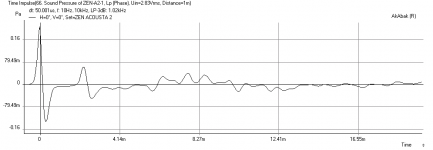
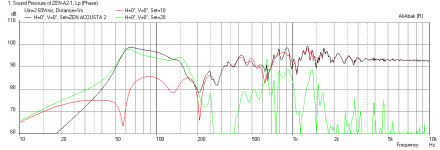
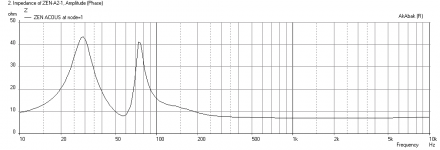
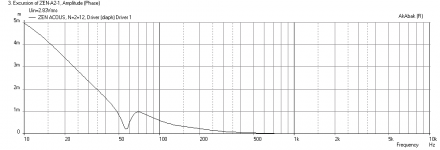

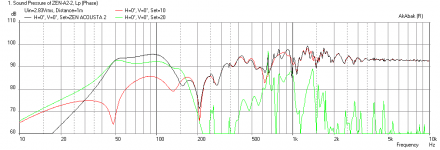
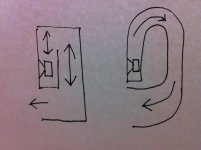
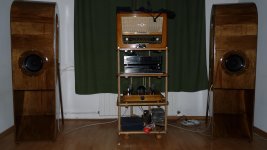
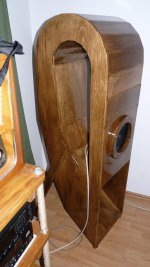
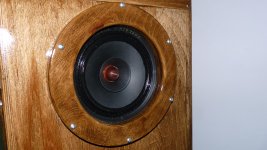
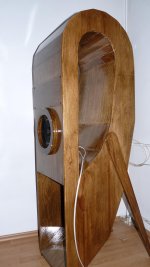
 how do you like the sound?
how do you like the sound?